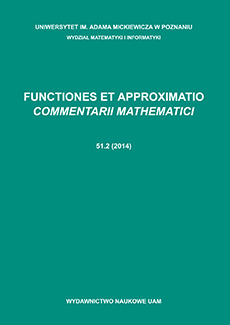Abstract
The $n$th Ramanujan prime is the smallest positive integer $R_n$ such that for all $x \geq R_n$ the interval $(x/2, x]$ contains at least $n$ primes. In this paper we undertake a study of the sequence $(\pi(R_n))_{n \geq 1}$, which tells us where the $n$th Ramanujan prime appears in the sequence of all primes. In the first part we establish new explicit upper and lower bounds for the number of primes up to the $n$th Ramanujan prime, which imply an asymptotic formula for $\pi(R_n)$ conjectured by Yang and Togbé. Then we use these explicit estimates to derive a result concerning an inequality involving $\pi(R_n)$ that was conjectured by Sondow, Nicholson, and Noe. In the second part of the paper, we apply the results derived in the first part to obtain some new results concerning the number of Ramanujan primes not exceeding $x$. Finally, we compute the limit of $((R_n - p_{2n})/n)_{n \geq 1}$.
Citation
Christian Axler. "On Ramanujan primes." Funct. Approx. Comment. Math. 63 (1) 67 - 93, September 2020. https://doi.org/10.7169/facm/1824
Information





